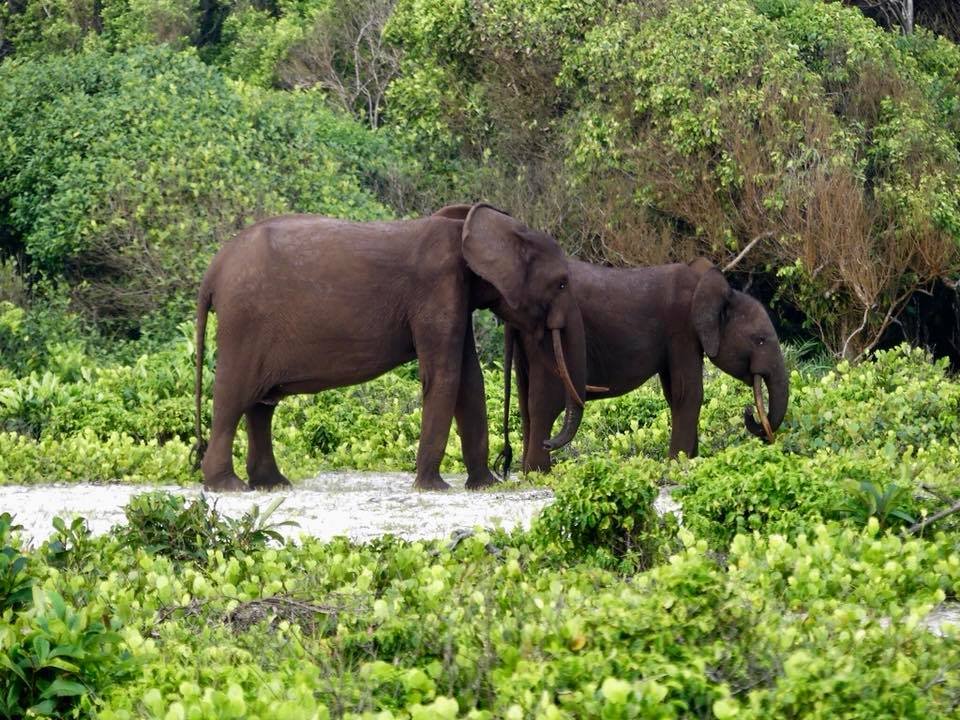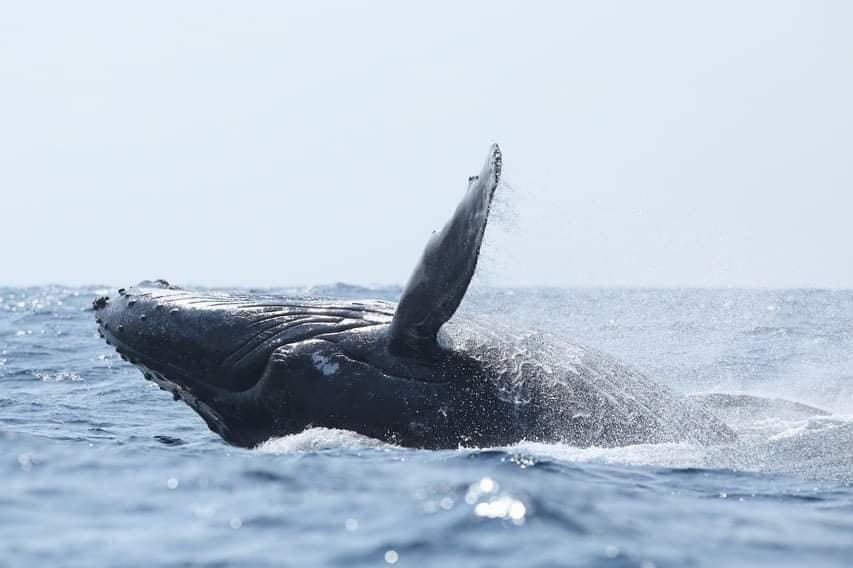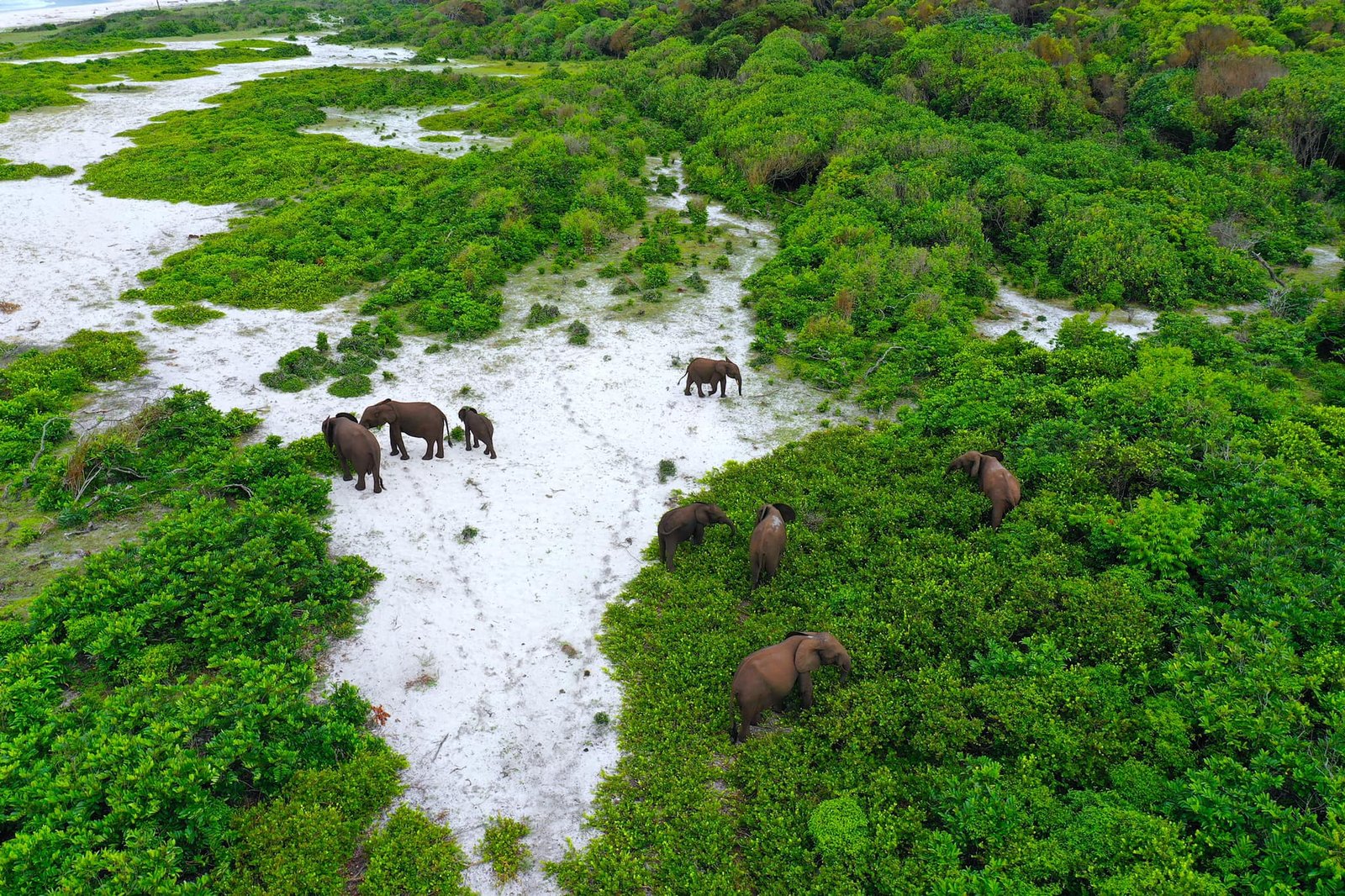Tucked between Nkomi and Ndogo Lagoons, Loango National Park stretches about 1,550 km2 (600 sq mi) of pristine forests, beach, savanna, and lush green mangroves.
Imagine: Sunlight filters through emerald canopies, dappling ebony sands where elephants leave silent trails. The rhythmic boom of the Atlantic lulls hippos to bask in turquoise shallows, while troupes of gorillas crash through verdant jungles, their laughter echoing on the warm breeze. This is Loango National Park, Gabon’s one of the 13 designated national parks bestowed with abundant wildlife.
Tucked between Nkomi and Ndogo Lagoons, Loango National Park stretches about 1,550 km2 (600 sq mi) of pristine forests, beach, savanna, and lush green mangroves. Here, one can enjoy the breathtaking view of turquoise waters that lap against ivory shores, and verdant rainforests, which hum with life. It’s no wonder many nature lovers dubbed it as ‘Africa’s Last Eden,’ and sometimes called it the ‘Land of the surfing hippos.’
Table of Contents
Wildlife Encounters at Loango National Park

Loango is a haven for wildlife enthusiasts. Here, you can witness the spectacle of forest elephants lumbering across the beach, their wrinkled hide glistening in the sun. Witness troops of playful gorillas swinging through the dense foliage, their guttural calls echoing through the ancient trees. Watch in awe as pods of humpback whales breach the ocean’s surface, their immense bodies dwarfing the surrounding waves. And let the playful antics of surfing hippos, a sight unique to Loango, bring a smile to your face.
Loango’s magic extends far beyond the iconic “Big Five.” The park is a treasure trove of rare and endemic species, from the elusive sitatunga antelope to the vibrantly colored Loango weaver bird. Birdwatchers will be enthralled by the cacophony of over 350 avian species, while reptile enthusiasts can track the sinuous movements of forest cobras and Nile crocodiles.
Wildlife Observation:

- Witness an array of eclectic bird species, including Violet-tailed Sunbird, African Finfoot, Vermiculate Fishing Owl, Malachite Kingfisher, Woodland Kingfisher, and Hartlaub’s Ducks.
- Encounter forest elephants, forest buffalos, Red River Hogs, Sitatunga, and chimpanzees in their natural habitat.
Tsetse Fly Precautions:
- Be aware of the presence of tsetse flies in the park.
- Wear long-sleeved shirts and pants made of medium-weight material in neutral colors to blend with the environment.
- Tsetse flies are attracted to bright or dark colors and can bite through lightweight clothing.
- Use insect repellent with active ingredients like DEET, Picaridin, or OLE for protection against tsetse flies.
READ ABOUT: TOP THINGS TO DO IN LIBREVILLE, GABON
Best Time to Visit Loango National Park

Choosing the ideal time for a visit to Loango National Park revolves around its distinct seasons and the diverse array of wildlife events that unfold throughout the year. The dry season, extending from December to January and May to September, witnesses wildlife migration to the park’s southern region. Conversely, the rainy season, occurring from February to April and October to December, offers a different set of experiences.
- Dry Season: Dec to Jan, May to Sep (Wildlife migration to the southern part of the park).
- Rainy Season: Feb to April, Oct to Dec (Various wildlife activities and events during different months).
Notable Wildlife Events:
- November to March: Arrival of nesting turtles and hatchlings.
- November to April: Elephants and hippos venture on the beaches.
- July to September: Migratory whales arrive during the breeding season.
- November to April: Best time for sports fishing.
- March to May: Ideal for viewing Atananga Gorillas.
- September to June: Best time to view wildlife in the northern end during rainy seasons.
- Mid-July to Mid-September: Arrival of migratory whales and dolphins; enjoy chartered boat trips.
- October to February: Nighttime observation of the largest population of leatherback sea turtles nesting on Loango’s beach.
Permits:
- Permits available from ANPN offices in Omboué and Gamba.
Sports Fishing in Loango National Park:
- The estuary at the park is a prime fishing spot.
- Home to some of the world’s largest game fish, including gargantuan-sized barracuda and cubera.
READ ABOUT: AKANDA NATIONAL PARK IN GABON
Human-Nature Harmony: Life in Loango National Park
The distribution of villages within Loango National Park is sparse, with the majority located on the opposite bank of the Ngove Lagoon. The park’s primary inhabitants are a diverse array of terrestrial, avian, and marine wildlife, creating a unique environment where human impact is minimal. The human population within the broader Loango area is limited, as most villages lie beyond the park’s boundaries. Despite migration and urbanization trends, the local inhabitants heavily depend on the natural resources that surround them for their daily needs.
Economic activities in the region encompass traditional agricultural practices, including slash-and-burn cultivation of domesticated plant species such as manioc, peanuts, and mustard greens. Fishing and hunting play crucial roles in the livelihoods of the inhabitants, with men utilizing various tools like nets, lines, hooks, traps, and spears. Notably, there has been a transition in hunting techniques, with traditional gear like bows and arrows being replaced by modern firearms, reflecting changes in hunting practices over time.
Food harvesting in the area is characterized by diverse sources, ranging from cultivated crops to wild products gathered from the forest, savannah, and beaches, including the collection of turtle eggs. The coexistence of traditional and modern practices is evident, with some methods evolving with the adoption of contemporary techniques and tools. This harmonious blend of traditional lifestyles and adaptation to modern influences contributes to the rich tapestry of people and culture within the Loango National Park region.
Sustainable Approach: Loango National Park
With a commitment to conservation, Gabon has allocated more than 22% of its landmass to protected areas. At the forefront of this dedication is Loango National Park, where stringent regulations and vigilant park rangers work tirelessly to uphold the ecological integrity of the region. Embracing sustainable tourism initiatives, the park strives to minimize environmental impact, offering visitors the opportunity to marvel at its wonders while safeguarding the delicate balance of its ecosystem.
How to Get to Loango National Park?
FLY:
- Direct flights to Iguela, located close to the park, offer a convenient option.
- Alternatively, you can fly from Libreville to Port Gentil, followed by a 35-minute flight. From Port Gentil, a car or boat ride to the park takes approximately three and a half hours.
- Boarding a 4WD for a 4-hour drive to Loango via Liambisi is another viable option.
Accommodation Options:
- Louri Wilderness Camp
- N’Dola Camp
- Akaka Forest Camp
- Loango Camps
